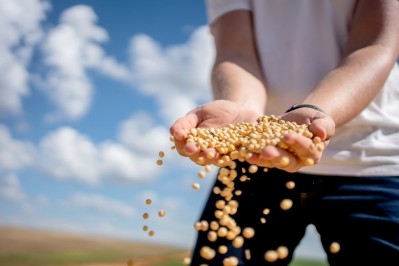Why are cereal prices falling?

In a time where high prices in many global commodities – including cocoa, sugar and olive oil – have risen dramatically, a few key staple crops are actually getting cheaper.
Cereal crops are falling in price. This is due to a variety of factors, but most significantly, an influx of new harvests from Europe, the US, and the Black Sea region.
“Aside from these recent monthly price drivers, the general decline in cereal prices over the past year has mainly reflected a fall in wheat and maize (corn) prices which have been primarily driven by ample supplies and exports of wheat from the Russian Federation, and of maize from Brazil, and strong exporter competition in both wheat and maize markets,” Erin Collier, an economist for the UN’s Food and Agriculture Organisation (FAO), told FoodNavigator.
Such pricing decreases have been going on for a while. “The current decrease in cereal prices follows a broader trend rather than being an outlier. While it is typical to see a seasonal dip in prices with the arrival of new crops and the start of a new marketing year, the ongoing decline is also due to high global production and weaker demand, particularly from key buyers like China,” Zanna Aleksahhina, grains analyst at market intelligence firm Expana (formally Mintec), told FoodNavigator.
Why are wheat prices falling?
The prices of many key cereal crops are falling, including wheat. For example, “wheat future prices continue to be bearish due to the influx of new harvests from Europe, the Black Sea region, and the US,” according to Aleksahhina.
Global wheat crop estimates for July and August 2024/25 by the United States Department of Agriculture (USDA), which predicts the season to reach 798.3 million tonnes have further reinforced these prices’ downward trajectory, surprising many market analysts.
The absence of demand from China has also raised prices.
Fall in demand from China
Part of the fall in price has been due to a decrease in demand from China. Expana’s Aleksahhina suggests a few reasons why this may be the case.
One is China’s recent ‘sluggish’ economic growth, which may be ‘putting a damper’ on the country’s overall demand for grain, she suggested.
Secondly, several market players within China’s borders suggest that it has a large domestic wheat supply at the moment, meaning they don’t need to look externally.
Lastly, China’s pig herd has been reduced, meaning that the need for grains has also reduced.
“However, we might see Chinese demand pick up again later in the year, especially when the US wheat crop is ready, which could lead to renewed buying activity,” Aleksahhina told us.
Conditions in the US and Canada play a key role in the falling of wheat prices. Major wheat producers and exporters, the two countries collectively contribute about 22% of global wheat exports.
“Currently, favourable growing conditions in both countries are bolstering expectations for large spring wheat harvests later this year. In Canada, while crop development is slightly behind in some areas, overall conditions are reported to be good, supporting the outlook for a robust harvest.

“In the US, the majority of the hard red winter wheat crop has been harvested, with about 90% completion as of mid-August, and reports indicate good quality. The soft white winter wheat harvest is also progressing well, with around half of the crop already harvested.
“Overall production in both countries is expected to surpass the previous year's levels, driven by increased yields.”
The significance or level of impact that crop conditions in any major exporter has on global prices, the FAO’s Collier reminded us, is dependent on a range of key dynamics, such as global and national supply levels, global supply levels, and macro-economic dynamics.
Why are corn prices falling?
In the corn market, prices are the lowest they’ve been in four years, driven by substantial short positions held by fund traders.
This downward trend is driven in part by good weather conditions as well as, once again, reduced demand from China.
Most substantially, however, is farmers’ withholding of their grain. According to Aleksahhina, they have the largest stockpiles of grain since 1988, which is due to both high production costs and low prices.
Which parts of the world rely on grains the most?
The fall of cereal prices affect far more people than just those with futures contracts. Lower-income countries are more likely to rely on grains for a higher percentage of calories, due to the high price of meat.
"When people’s income are low, they tend to devote a large share of income to food purchases (and other necessities). Generally speaking, satisfying necessary calorie intake from cereals tends to be less expensive than a nutritionally balanced diet," the FAO's Collier told us.
According to the FAO, Bangladesh, Mali and Ethiopia rely on grains for 70% of their calories. The UN regards all of these countries as ‘least developed countries.’ Afghanistan, Madagascar, Myanmar, Yemen, Egypt, Bhutan, Lesotho and the Philippines rely on grains for between 60% and 69% of calories.
Furthermore, some countries rely more stringently on imports than others, depending on their domestic capacity. Yemen, for example, imports more than 90% of its food, the FAO’s Collier told us, because the landscape and environment constrains its domestic capacity.
According to the USDA’s August report, corn production is expected to reach 1.2 billion tonnes globally for the 2024/25 season. This is driven by an increase in US output, estimated at 394.7 million tonnes.
Total production from other key exporters such as Argentina, Brazil and Ukraine, has significantly increased as well.
Brazil and Argentina collectively make up around 45% of global corn exports, and a bumper crop in both countries can thus but a downward pressure on prices.
Soy prices continue to fall
As well as cereal prices, soybean prices continue to fall. Not hampered by recent events such as the flooding in Rio Grande do Sul, Brazil, soybean prices on the Chicago Board of Trade (CBOT) have reached a four-year low as of last week.
“The combination of ample supplies and weak demand, underpinned by a bearish August USDA report, is placing downward pressure on both bean and oil prices,” Aleksahhina told us.
“Market participants have noted that US exports are lagging, with major importers, particularly China, opting for purchases from Brazil, where a weaker currency is making soybean sales more competitive.”

Which cereal crops are seeing increasing prices?
While seeing a slight decrease in July, Indian rice prices have overall seen an upward trajectory. “I would say that Indian rice prices have been elevated now for some time,” Aleksahhina told us. In January this year, they saw a 15-year high.
The reason for this, she told us, is due to trade restrictions put in place by the Indian government, in the form of bans and tariffs.
However, according to market players, restrictions may be relaxed to avoid a surplus before the new crop arrives this October. India’s government is considering allowing white riced shipments with a fixed duty, as well as replacing the 20% tax on parboiled rice exports with a fixed levy in order to prevent under-invoicing.
This, predicts Aleksahhina, could reduce the price of Asian rice, a price reduction which would benefit West Africa and the Middle East, regions which, she told us, depend on Indian rice.

























